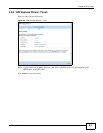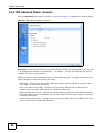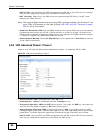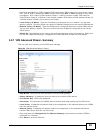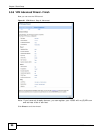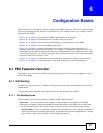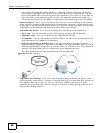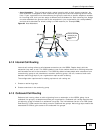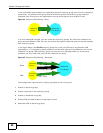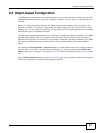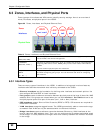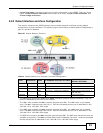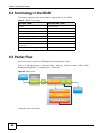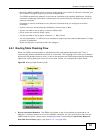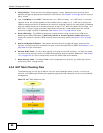
Chapter 6 Configuration Basics
ISG50 User’s Guide
89
• Auto-Attendant - This is a feature which routes incoming calls to their proper extension. An
auto-attendant is assigned to each outbound line group and it services incoming calls on those
lines. If your organization has two outbound line groups, each with a specific telephone number
for incoming calls, then you can assign a different auto-attendant for each incoming line. Assign
one auto-attendant for general calls to the extensions in your organization (for example AA1)
and one auto-attendant for direct routing to a FAX machine (for example FAX).
Figure 63 Auto-Attendant
6.1.2 Internal Call Routing
Internal call routing refers to calls between extensions on the ISG50. People simply dial the
extension they want to call. The ISG50 checks to see if the number dialed is an existing extension
and forwards the call to that extension. The ISG50 by default allows people with extensions from
one authority group to call extensions in another authority group. You can, however, block calls
between authority groups if your organization requires such a setting.
The configuration requirement for setting up internal call routing are:
1 Create an authority group.
2 Create extensions in the authority group.
6.1.3 Outbound Call Routing
Outbound call routing refers to calls originating from an extension on the ISG50, going via an
outbound line group to a telephone outside your organization. Outbound call routing requires that
an authority group is linked to an outbound line group. The link between the two is an LCR (Least
Cost Routing). LCRs contain the dialing rules for outbound line groups. Authority groups need to be
associated to LCRs to gain access to the outbound line groups.
AA1
FAX
1001
1002
1003
2001
555-0001
555-0002
Please dial the
extension you
would like to
reach.
ISG



